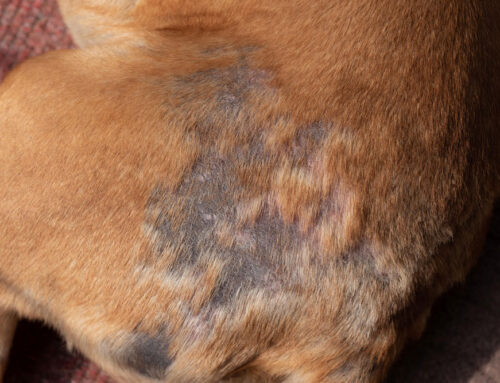If your pet is sneezy, wheezy—’tis the season. Allergies in pets—and humans—are common, especially in the spring, and are caused when the immune system overreacts to a particular substance (i.e., an allergen). Human and pet allergy sufferers may experience respiratory issues, such as sneezing, runny nose, and watery eyes, but pets’ allergies are more likely to manifest as skin and ear infections. So, how can you manage your pet’s allergies? First, you need to know the facts. Our team at Creature Comforts Veterinary Service is here to help you separate fact from fiction, so you can identify, and soothe, your pet’s allergies.
Myth #1: All pets are at the same risk for developing allergies
Any pet can suffer from allergies, but certain breeds, including golden retrievers, poodles, shih tzus, cocker spaniels, and bulldogs, are more genetically predisposed to a skin condition called atopic dermatitis (AD) caused by environmental allergens. Affected pets normally begin showing signs between the ages of 1 and 6. Signs may include:
- Itching
- Scratching
- Rubbing
- Licking
- Greasy skin
- Redness or tough skin
Myth #2: Pet allergies are seasonal
Environmental allergens, like pollen, grass, weeds, mold, and fungi, can affect pets seasonally, but often are a year-round problem. Year-round allergic pets can have episodes of “allergic flares,” when their symptoms worsen. A pet’s signs can also vary from season to season, with severe suffering during one season, but milder issues another season. Some pets can be affected by more than one allergen, and older pets can suddenly become allergic to a substance, such as a food ingredient, they have eaten their whole life.
Myth #3: The cause of pet allergies cannot be determined
While identifying pet allergies is not always easy, our Creature Comforts Veterinary Service veterinary team can determine your pet’s triggering allergens and then recommend the appropriate treatment. Depending on your pet’s allergy type—environmental, food, or flea—we will use the following tests:
- Intradermal skin testing — This is used to identify environmental allergens, such as dust, grasses, and pollen. A small amount of allergen is injected under your pet’s skin, and the injection that causes a reaction (e.g., redness, swelling, hives) identifies the trigger.
- Blood testing — Blood testing is commonly used to determine the allergen type.
- Elimination diet — A food elimination diet is the only way to identify the ingredient causing a food allergy.
Myth #4: Pet food allergies are common
A true food allergy is not common, and is often confused with food sensitivity. A food allergy occurs when the pet’s immune system responds to a protein—most often beef, chicken, dairy products, or wheat—in their food, while a pet with a food sensitivity, or food intolerance, cannot properly digest a particular food and usually shows signs soon after eating. Food allergy signs vary, and may include:
- Itching
- Hair loss
- Ear infections
- Vomiting
- Diarrhea
- Loss of appetite
If your veterinarian suspects your pet has a food allergy, they will likely use a elimination diet, where you will feed your pet foods that they have never eaten previously for six to eight weeks. Then, ingredients from the original diet are re-introduced until your pet shows allergy signs and the offending ingredient is identified. Once the allergen is determined, our veterinary team will recommend an appropriate, nutritious diet.
Myth #5: Fleas are no big deal for pets
Fleas may be tiny, but they can cause big problems. A flea that bites your pet injects its saliva into their skin. Many pets are hypersensitive to a protein in the saliva and suffer a severe reaction to flea bites, called flea allergy dermatitis (FAD). Flea allergy signs may include:
- Intense scratching
- Hair loss, especially on the hind end and tail base
- Red, irritated skin
Because fleas are tiny and can reproduce quickly, and because pets often overgroom to stop the itching, you may not notice these pests until your pet shows obvious signs of discomfort. If you suspect your pet has fleas, our veterinarian can make the diagnosis from evidence of fleas or flea dirt (i.e., flea excrement) and can recommend a flea control plan. Grooming your pet with a fine-tooth comb will help, but you will need to eradicate all the fleas from your home to end your pet’s discomfort.
Myth #6: Pet allergies can be cured

Unfortunately, pet allergies cannot be cured, but they can be managed. Treatments that can help keep you pet more comfortable include:
- Topical ointments
- Steroids, as a short-term treatment
- Medicated shampoos
- Anti-itch medications
- Prescription food-allergy diets
Allergies can make life miserable for pets, but knowing the signs will help you recognize that they are suffering. If you suspect your pet has an environmental, food, or flea allergy, contact Creature Comforts Veterinary Service to schedule an appointment. We will determine their allergen and alleviate their discomfort.







Leave A Comment